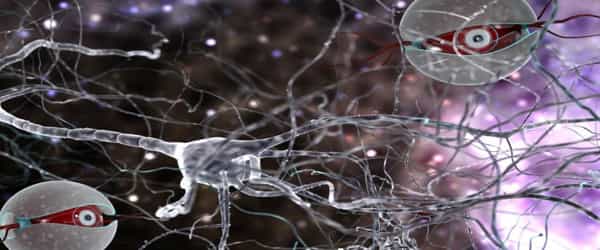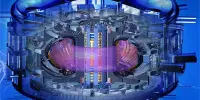A new type of injectable biosensor may one day be able to read your thoughts or allow you to communicate using only your mind. NeuroSWARM3 researchers claim that their gold-plated nanosensors, the size of a single viral particle, can travel through the bloodstream and cross the blood-brain barrier. They would act as an antenna inside the brain, converting neural activity into optical signals that could be wirelessly transmitted to an external device.
Researchers at the University of California, Santa Cruz, believe that it could help scientists better understand the mysteries of human cognition in the short term. Longer-term, potential applications sound like science fiction: composing messages with your thoughts, controlling exoskeletons with your thoughts, and monitoring neurological disease without invasive procedures.
“NeuroSWARM3 can convert signals that accompany thoughts to remotely measurable signals for high precision brain-machine interfacing,” said co-author A Ali Yanik.
A team of scientists has developed a new kind of biosensor that can be injected straight into the bloodstream, and will then travel to your brain, where they will, according to the scientists behind the project, monitor your neural activity and even potentially thoughts.
According to research presented next week at a virtual Optical Society conference, the cell-sized Nanosensors, aptly named NeuroSWARM3, can cross the blood-brain barrier to the brain, where they convert neural activity into electrical signals, allowing them to be read and interpreted by machinery.
According to the researchers, the technology could help people with disabilities gain more mobility while also helping scientists better understand human thought. They have not, however, been tested on humans or animals.
The technology works by intercepting the electrical signals that neurons use to communicate with one another. This occurs whenever humans do anything, including moving and thinking. NeuroSWARM3 is a novel method for monitoring electrical activity. Yanik’s most recent research shows that it is sensitive enough to detect the activity of individual brain cells.

“NeuroSWARM3 can convert the signals that accompany thoughts to remotely measurable signals for high precision brain-machine interfacing,” says A., the study’s lead author. In a press release, Ali Yanik stated. “It will allow people with physical disabilities to effectively interact with the outside world and control wearable exoskeleton technology to overcome body limitations.” It may also detect early signs of neurological diseases.”
It’s also a markedly different approach to the problem of brain-computer interfaces than most high-profile efforts, such as Elon Musk’s Neuralink, which focuses on implant-based solutions rather than nanosensor swarms.
Other researchers have taken a similar approach, employing quantum dots that respond to electrical fields. When the researchers compared the two technologies, they discovered that NeuroSWARM3 generates an optical signal that is four orders of magnitude larger. To generate a comparable signal, quantum dots required ten times more light intensity and one hundred times more probes.
During testing, the researchers discovered that their nanosensor swarm is sensitive enough to detect the activity of individual brain cells. Single-neuron readings are not novel, but the ability to detect them with free-floating sensors, and especially to wirelessly broadcast them through a patient’s thick skull, is a significant technological advancement. If further tests show that these capabilities are useful, they could make real-time neuroscientific research easier and neurological medicine more sophisticated.
It is important to note that no animal or human testing has yet taken place, but if it does, the procedure would be far less invasive than comparable technologies such as Elon Musk’s Neuralink. Unlike that, which necessitates a surgically implanted microchip and wires protruding from the side of a person’s skull, NeuroSWARM3 does not necessitate surgery, implants, or wires. In addition, the nanoparticles can be powered indefinitely.















